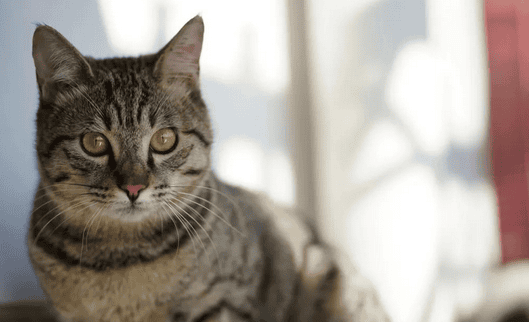Now that the weather is getting colder, and with the repeated intrusion of cold air, I believe many people have caught a cold.
I believe that many pet owners, while caring about their own health, will also care about the health of their pets at home. So are cats prone to colds in winter? Will there also be upper respiratory tract symptoms? Can a human cold be transmitted to a cat? Will cats also have tyrannical viruses similar to "H1N1" or "COVID-19"?

Today’s article will take you through the key viruses in the upper respiratory tract of cats. After reading this, I believe you will be more comfortable answering the common questions pet owners have. Cats Strictly speaking, kittens don’t have a “cold”, and it’s best not to say so. But cold air can cause cats to get cold. However, if you have cold symptoms such as sneezing, runny nose, tears, increased eye secretions, and cough, it may actually be due to upper respiratory tract infection, that is, infection with viruses, bacteria, or mycoplasma. In cats, "feline herpesvirus" and "feline calicivirus" account for 80% of cases of cat influenza. Among them, there is the number one devil "Calicivirus", which is the culprit of cats' frequent "colds". Feline calicivirus can be called the "new coronavirus of cats". Although it does not belong to the same family as the "new coronavirus", it has many similar characteristics. It mutates quickly, has many strains, is easy to relapse, and is easily spread among cats. If the excrement officer visits the house, he may also bring the virus infection. Cats are very painful after being infected with COVID-19. I hope that after reading this article, you can use the weapon of knowledge to scientifically prevent cats’ upper respiratory tract diseases. Feline calicivirus FCV is an RNA virus that mutates rapidly and has many different strains around the world. The high FCV infection rate in cats is related to the diversity of FCV strains. The same cat can be continuously infected by the same FCV variant strain and can also be infected by other FCV strains. Once the new strain is introduced into the cat population, it can recombine with the previous strain, increasing the risk of FCV mutation. Judging from the current literature, the evolution of FCV does not show a specific tendency of change in time and space, and there is no large-scale circulation data to support the conclusion that a local epidemic strain has emerged in China. Although FCV has high variability, academic circles currently believe that FCV has only one serotype, and vaccination can greatly reduce the incidence of feline calicivirus. Although it cannot be 100% prevented, it is still The most effective and direct way to avoid cat infection. At the same time, the ABCD (European Feline Disease Steering Committee) guidelines for the prevention and management of FCV infection also state that no specific strain is dominant worldwide. The spread of FCV among cat groups can be effectively reduced through good hygiene (daily cleaning and disinfection of the cat’s living environment) and biosecurity measures (isolation of sick or infected cats, vaccination). So what exactly is the cat seedling we are talking about? Vaccines mainly include live attenuated vaccines and inactivated vaccines. At present, the triple vaccine made of FCV, FHV-1 and FPV is mainly used at home and abroad. Due to the characteristics of the pathogen, the role of this triple vaccine is mainly reflected in two aspects: preventing diseases caused by FPV (feline parvovirus/feline distemper virus); effectively reducing the severity, duration and detoxification of clinical symptoms in cats infected with FCV and FHV-1 quantity. Why do vaccines to prevent viruses have different results? Because FPV is humoral immunity and mainly relies on antibodies to clear pathogens; while effective immunity of FHV-1 and FCV requires both antibodies and cell-mediated immune responses (mainly relying on cellular immunity), does FCV continue to detoxify? Can vaccination prevent cats from continuing to shed the virus after being infected with FCV? One study reported that the effect of vaccination on FCV shedding depends on the time point after vaccination; when cats become infected with FCV weeks or a year after vaccination, the amount of FCV shedding is reduced, and when cats are infected with FCV three weeks after vaccination, the amount of FCV shedding decreases. When infected with FCV again later in life, the amount of FCV detoxified will not be reduced. Another large study of 516 FCV-infected cats showed that properly vaccinated cats were approximately 2.9 times less likely to be infected with FCV than unvaccinated cats. Considering that cats go out (for foster care, bathing, medical treatment, etc.), new cats join the family, and multiple cats get along with each other, etc., the risk of FCV infection will increase, it is recommended that cats be vaccinated with a triple vaccine booster every year. Special attention should be paid to introducing new cats into FCV-free households. It is best to undergo a three-week quarantine and undergo an FCV swab test before bringing a new cat into the household.
Now when it comes to preventing cat diseases, many people know that prevention is better than cure. The best way to prevent cats from getting upper respiratory tract diseases is to get vaccinated. . Although there are many mutant strains of FCV, vaccination with the core vaccine can have a preventive effect against global strains.

In short, although the vaccine has limited protection due to the characteristics of the FCV virus itself, through good hygiene and preventive management, regular vaccination can effectively reduce its prevalence in the cat population. Veterinarians should explain the risk factors of FCV infection to pet owners, develop appropriate vaccination plans for cats with low immune function, and ensure that cats are vaccinated with a triple vaccine booster every year, so as to establish effective protection for the cat population. This article introduces you to the "new coronavirus" in cats - feline calicivirus. It is an RNA virus with many strains and rapid mutation. It has a high incidence of respiratory diseases and is prone to recurrence. However, even though it can change in an ever-changing manner, the best way to prevent it is to remain unchanged in response to the ever-changing situation - to get core vaccines and basic immunity. There is a "new coronavirus" among cats. Fortunately, we have the best weapon against the virus, which is the "Miaosanduo" cat triple vaccine. Produced by Zoetis, an international manufacturer, it has been an imported brand for more than 15 years since it was the Pfizer era. With over 50 million servings used, it provides the most secure protection for cats.

 扫一扫微信交流
扫一扫微信交流
发布评论